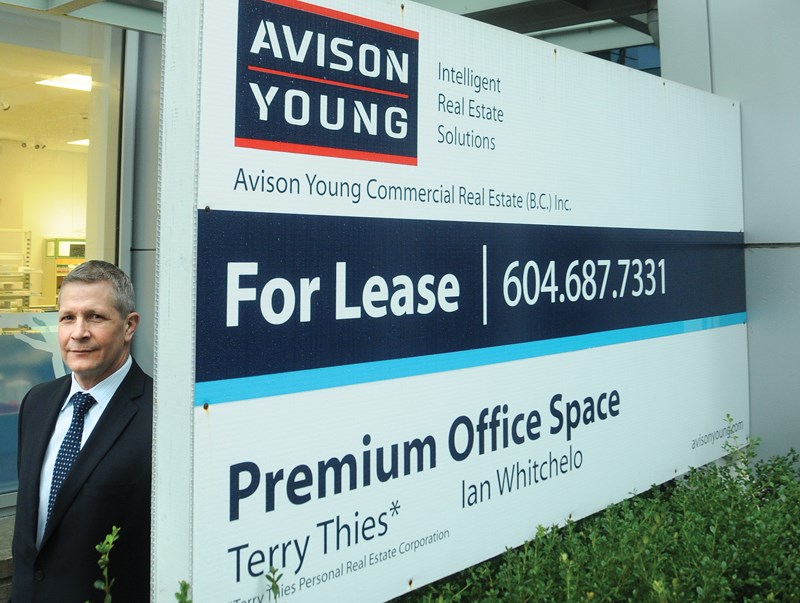There’s plenty of supply on the market for businesses looking for office space but the availability of space for light-industrial work on the North Shore is desperately low.
Those are some of the takeaways from commercial leasing firm Avison Young’s 2016 report on the North Shore commercial real estate market.
Office space vacancy sat at 7.8 per cent the end of the third quarter, which is considered the upper end of a healthy commercial vacancy rate. Industrial land, however, is another matter with only 0.4 per cent vacancy, down from 0.8 per cent the year before.
“On the industrial side, the vacancy rate is dangerously low and it’s allowing landlords to set their targets at much higher rental rates than they may have achieved in the past,” said Terry Thies, principal of Avison Young.
A lack of available undeveloped land, plus longer processing and approval times from municipalities means it takes much longer for any new office, industrial or retail space to come on to the market, Thies said.
“There’s a much larger gap in the ability to deliver product than what there used to be,” Thies said.
Some of the downward pressure on the light industrial market is coming from an expansion of Port of Vancouver property to accommodate the new G3 grain terminal, which is set to begin construction this year, and the expansion of Western Stevedoring’s Lynnterm East Gate terminal.
While many of the light-industrial businesses evicted have been able to relocate on the North Shore, others moved to Burnaby or Vancouver simply because there were no spaces that could accommodate them on the north side of Burrard Inlet, Thies noted.
The District of North Vancouver is looking to add to the supply of light-industrial land as it moves through its planning process for the Maplewood town centre, which Thies has some advice for.
“We would like to see the municipality open their zoning books a bit more broadly to accommodate more of a blend of uses within that Maplewood area,” he said, pointing to some recent projects that bring together light-industrial, office space and residential units in East Vancouver as an example.
Thies said the same could apply to other light-industrial neighbourhoods like the area west of lower Mountain Highway now known as Lynn Creek (formerly Lower Lynn) town centre. Council has be reticent to do anything that might result in further evictions of businesses like auto body repair shops but Thies said there can be a net increase of industrial units with some densification and allowing more uses, like gyms and dance studios.
“I think we’re going to need to demonstrate a little bit more flexibility in terms of a mix of uses that are permitted within industrial zones, whilst doing everything we can to maintain that industrial base because, as we all know, that is real driver for economic activity,” Thies said. “It’s a real delicate balance.”
Avison Young is forecasting the vacancy rate for office space to rise in 2017 when the 80,000 square feet of office space in Onni’s Centreview project at 13th and Lonsdale comes on the market. Half of that space has already been pre-leased by an engineering consulting firm currently in the Harbourside neighbourhood.
The price per square foot for commercial space has firmed up in the last year, Theis said, but landlords are also offering better inducements for prospective tenants, like free rent or a larger capital allowance for making improvements to a unit before a business opens.



